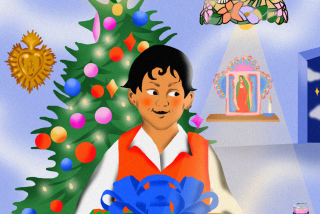Saving Your Skin From the Dry Winds of Winter
- Share via
With seasonal Santa Ana winds and low humidity comes xerosis, an abnormal dryness of the skin that occurs when the outer, protective layer loses water and becomes less flexible and more brittle.
“Water is constantly leaving the skin and being replaced from below to keep the outermost layer moist,” said Dr. Ronald M. Reisner, professor and chief of dermatology at the UCLA School of Medicine. “But when the air is dry, more water leaves the skin. And if the wind blows, even more moisture is sucked out . . . carried away faster than it can be replaced by the living skin below.”
Almost everyone suffers from excessive dry skin at times, but elderly and fair-skinned people are especially susceptible, he said.
“Those with asthma, hay fever and infantile eczema tend to have drier skin,too,” said Dr. Thomas Rea, a professor of dermatology at the USC School of Medicine.
To minimize dryness, avoid prolonged hot baths and showers. “They take out of your skin chemical substances needed to hold in water,” Reisner said, adding even bubble baths with oil may dry the skin.
Apply a cream or lotion immediately after showering or bathing, he advised, the “least expensive lotion or cream that you like” because all work by blocking water loss.
Humidifying the environment may also help, Rea said. But beyond these measures, there is not much sufferers can do. “People want magic and there is none,” Reisner said, adding that nutritional deficiencies don’t normally cause dry skin.
If self-care doesn’t work within a few days and the skin continues to redden, seek professional help, Rea said.
Believing in St. Nick
This is also the season when young children resurrect questions that aren’t always easy to answer, queries like: Is there really a Santa Claus?
Such questions can be tough on parents in doubt about when children should stop believing in Santa Claus--and whether to give children the news or let them figure it out. Psychologists, too, are divided.
Los Angeles psychologist Robert R. Butterworth says most children are ready to abandon the Santa Claus myth at age 7 1/2 and that it’s a parent’s job to help them do so. Children who believe in Santa after age 8 risk ridicule by nonbelieving peers, he says, and offers this approach when breaking the news: Tell children that Santa lived as St. Nicholas and that the spirit of Christmas is still alive even though St. Nicholas isn’t.
Karol Fishler, a psychologist at Childrens Hospital of Los Angeles, says “let children find out on their own. There’s no use rushing it.”
Psychologist John C. Condry, a professor of human development and family studies at Cornell University who surveyed more than 500 children about their beliefs in Santa, doesn’t think “there’s any particular age a child should stop believing.” Wait until children start expressing doubts, then help fill in the blanks, he advises.
The Cornell survey also found: Oldest children in a family usually believe longer than middle or youngest children. The more parents support the myth, the longer it takes kids to give it up. Parents shouldn’t worry that their kids will resent “being lied to . . .” When we asked 400 nonbelievers if they resented their parents (for telling the Santa Claus story), not a single one said yes ,” Condry said.
More to Read
Sign up for Essential California
The most important California stories and recommendations in your inbox every morning.
You may occasionally receive promotional content from the Los Angeles Times.













